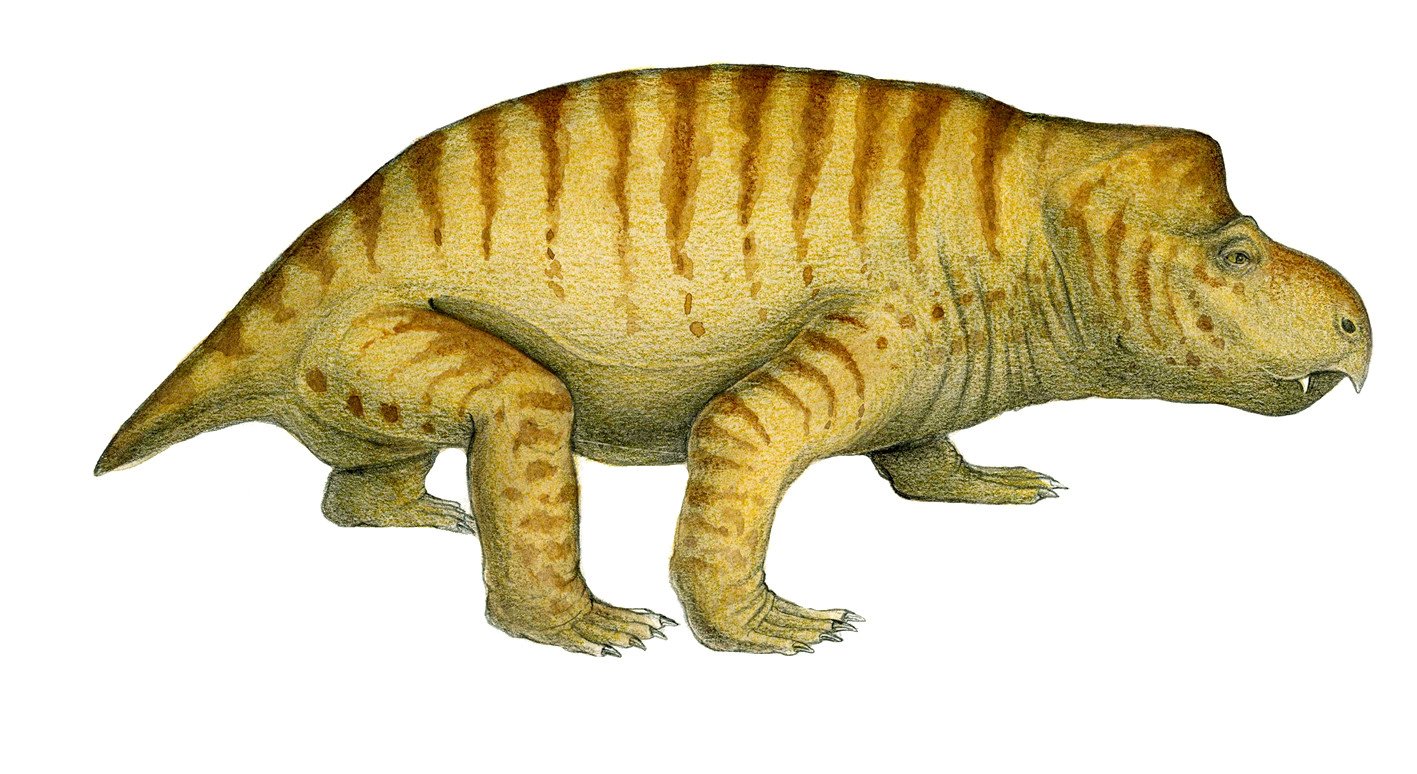The Triassic Period (252 - 201 million years ago)
The Triassic was a time of recovery and diversification after the mass extinction at the end of the Permian.
The Triassic was getting hotter and dryer but a large part of Australia was under the influence of a monsoonal regime. The continents were still united as a super-continent called Pangaea and there was little to stop tetrapod animals migrating except climate.
Australia's Triassic facts
Position
- Most of Australia was within the high latitudes and the south pole lay in Eastern Australia
Climate
- There were no polar ice caps, so the world’s climate was generally hot and dry with monsoonal polar regions.
- Carbon dioxide levels were about three times higher than today.
Setting
- Coal swamps had virtually disappeared. Most of Australia was land but some large sedimentary basins persisted.
Vegetation
- The vegetation was dominated by the forked seed-fern, Dicroidium with abundant horsetails, club-mosses, ginkgoes, ferns, conifers such as pines and araucarians.
Animals
Aquatic environments were dominated by fish and labyrinthodont amphibians.
Labyrinthodont amphibian

© Australian Museum
Dicynodont therapsid, Queensland

© Australian Museum
Eoraptor

© Australian Museum
Clatrotitan scullyi (andersoni)

© Australian Museum

© Australian Museum
What was happening in the rest of the world
- The first dinosaurs, prosauropods, early ornithopods, small predators like Eoraptor and Herrerasaurus appeared.
- The mammal-like reptiles were declining.
- The long-tailed pterosaurs rule the air.
- Sharks, bony fishes and ichthyosaurs inhabit the oceans
- Early crocodiles, lizards and turtles thrive; insects such as cockroaches and dragonflies flourish
- Primitive mammals were appearing.





